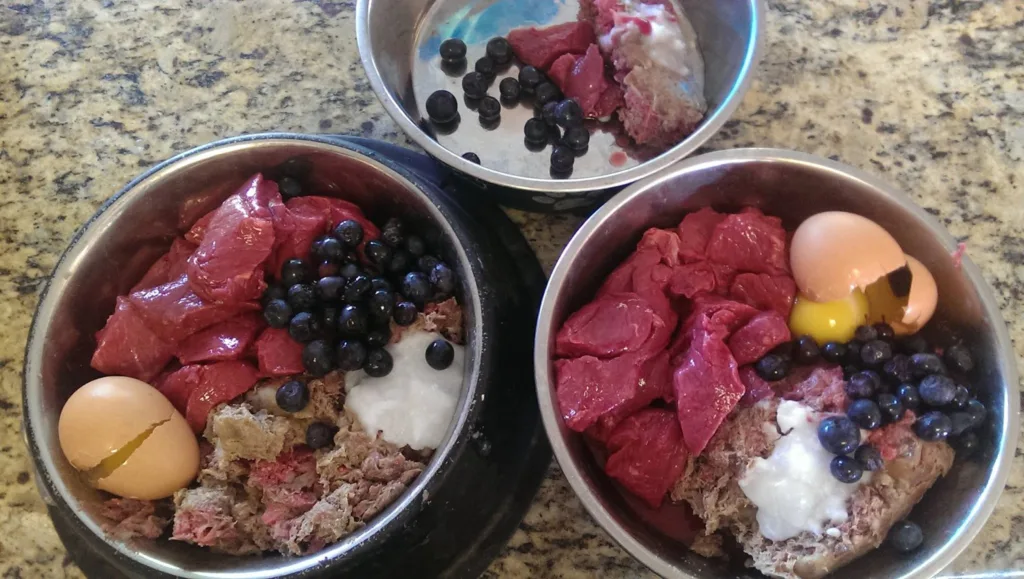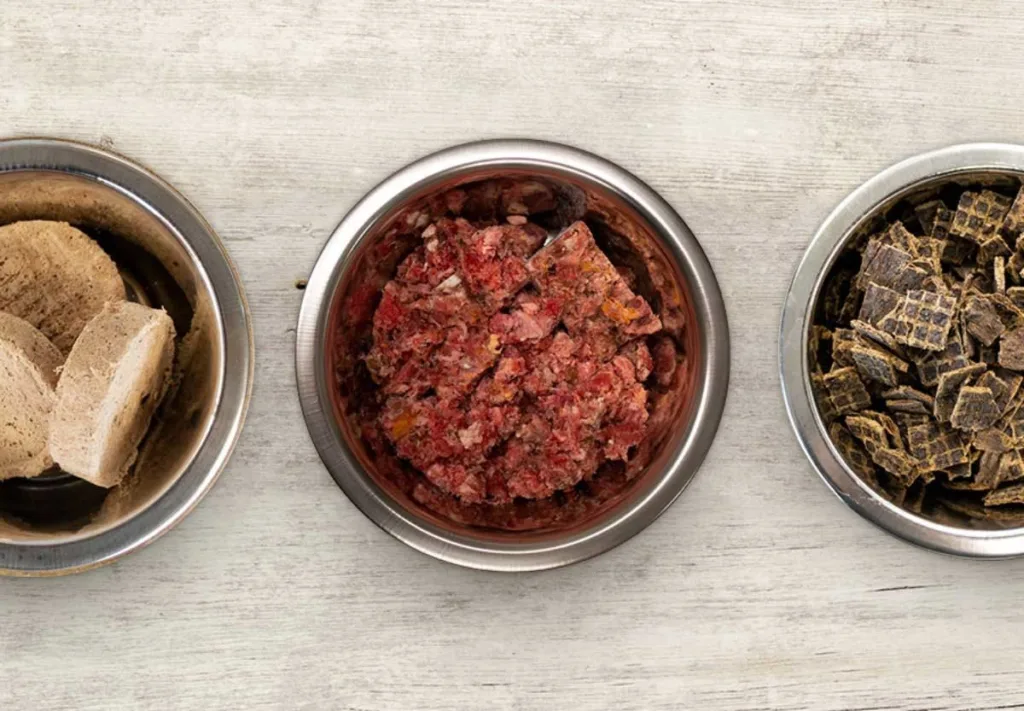The raw food diet has become increasingly popular in health and wellness circles, with advocates touting the benefits of eating fresh, unprocessed, plant-based foods. While consuming fruits, vegetables, nuts, seeds, and other nutrient-dense foods in their raw natural state does come with noted health advantages, those opting for raw diets need to be mindful of food safety. Meticulous care must be taken when handling, preparing, and storing raw ingredients in order to avoid contamination by harmful bacteria, viruses, toxins, or other foodborne pathogens. When done right, raw diets can be an incredibly nourishing way to eat. But caution is warranted, as improper food handling can lead to acute illness or even life-threatening conditions.
In this article, we will delve into everything you need to know to embrace raw foods safely. We will explore the raw food movement and why it has gained traction, examine the science-backed health benefits raw diets can provide, outline important food safety considerations, and offer practical tips for sourcing, storing, and preparing raw ingredients to sidestep contamination. Read on to learn how you can feel confident incorporating more fresh, vibrant, unadulterated foods into your routine without putting yourself at risk.

Defining the Raw Food Diet Trend
The raw food diet consists of eating foods that have not been heated above 104-118°F, the temperature range most raw food proponents cite as critical for preserving enzymatic activity and nutrition. Cooking food, especially at high temperatures, is believed to damage or denature enzymes and beneficial nutrients. Raw foodists aim to consume produce, nuts, seeds, and certain animal products in their natural state without cooking to maximize nutritional quality.
Diets based on raw foods are primarily plant-focused. They emphasize fresh fruits and vegetables, nuts and seeds, sprouted ancient grains, cold pressed oils, dried fruits, and raw nut-based milks. Most raw food diets also avoid refined oils and highly processed packaged foods. Within the raw food realm there are several variations:
- Raw vegan/vegetarian: Excludes all animal products and only includes plant-based foods. May also be called “high carb, low fat” raw.
- Raw omnivore: Incorporates some raw animal products like meat, eggs, dairy or fish along with raw plant foods. Also known as “high protein, low carb” raw.
- High raw: Around 80% or more of the diet is consumed raw. Allows moderate amounts of cooked food.
- Low raw: 50-70% of the diet is composed of raw foods. Significant inclusion of cooked plant and animal foods.
- Raw till 4: Eats only raw plant foods until mid-afternoon, then incorporates cooked foods for dinner.
While approaches differ, common threads run through all raw diets – a focus on fresh, whole plant foods, emphasis on natural enzymes, and avoidance of high heat cooking methods.

Examining the Health Benefits of Raw Food Diets
Advocates of raw eating claim there are numerous benefits to consuming more fresh, uncooked plant foods. Heating food, especially to temperatures over 118°F, is believed to damage or destroy the natural enzymes and beneficial nutrients inherently present. Raw food proponents assert that cooking denatures proteins and vitamins, diminishes antioxidant levels, and creates toxic byproducts. Consuming foods raw preserves food’s natural nutritional qualities and enzymes, leading to enhanced digestion and absorption compared to cooked foods.
Beyond preserving more vitamins, minerals, and antioxidants, raw diets centered around fruits, vegetables, nuts and seeds deliver key beneficial plant compounds. These include dietary fiber, antioxidants like polyphenols, phytochemicals such as carotenoids and glucosinolates, essential fatty acids, and more. Such compounds are strongly tied to anti-inflammatory activity in the body, cardiovascular benefits, accelerated detoxification, cellular repair, potential cancer prevention, and protection against various chronic illnesses. Raw plant foods are also naturally nutrient and water-rich without providing excessive calories, making them favorable options for achieving and maintaining a healthy body weight.
Some of the touted health advantages attributed specifically to raw diets include:
- Improved digestion and assimilation of nutrients from food
- Increased energy levels and athletic performance
- Healthy weight management and body composition
- Lowered blood cholesterol and lipid levels
- Reduced systemic inflammation and body-wide detoxification
- Enhanced cardiovascular function and lower heart disease risk
- Protection against diabetes, certain cancers, and other chronic diseases
- Clearer, more radiant skin, stronger nails, and shinier hair
- Oral health benefits like healthier gums, whiter teeth
Multiple studies have demonstrated tangible benefits of long-term raw vegan diets. Research confirms raw plant-based eating can lower blood lipids, reduce inflammation, enhance cardiovascular function, and offer protection against certain cancers and chronic disease processes. However, some benefits attributed to raw diets may also arise from focusing on fresh, whole plant foods over processed options, increased fruit/vegetable intake, higher fiber consumption, probiotics, achieving a healthy body weight, and following an overall healthy lifestyle.
Recognizing the Risks – Foodborne Illness and Contamination
Despite the touted benefits, consuming foods raw does involve risks that must be addressed – namely from foodborne pathogens. Bacteria, viruses, parasites, mold, and environmental toxins are all potential risks associated with raw food diets. Pathogens like Salmonella, Campylobacter, Listeria, E. coli, Staphylococcus aureus thrive on the moist surfaces of fresh produce, sprouted nuts/grains, and raw animal products. Consuming contaminated raw or undercooked foods leads to foodborne illness.
Symptoms of foodborne illness may range from mild stomach upset to severe life-threatening conditions depending on the pathogen and severity of exposure. Possible symptoms include:
- Nausea, vomiting, abdominal cramping, diarrhea
- Fever, body aches, dehydration, bloody stools
- Headaches, disorientation, tremors, seizures
- Fatigue, dizziness, inability to keep food down
- Kidney and liver damage or failure
- Miscarriage, stillbirth in pregnant women
- Arthritis, neuralgia, paralysis, blindness
Those most vulnerable to severe illness from contaminated raw foods include older adults, young children, pregnant women, and those with compromised immune function. But even healthy individuals risk acute illness if proper precautions are not taken. The CDC estimates 48 million Americans contract foodborne illnesses annually leading to over 3,000 deaths. Meticulous care must be taken when sourcing, handling, and preparing raw foods to avoid pathogenic contamination and exposure.

Safe Handling of Raw Foods – Reducing Contamination Risks
While raw diets do necessitate caution, you need not avoid them out of fear. Mindfulness and proper handling techniques can effectively reduce the risk of foodborne pathogens. Here are some tips for safer raw food preparation:
Produce
- Scrub firm fruits and vegetables vigorously under cold running water before consuming, including organic produce. Hot water cooking can kill pathogens, but raw produce misses this protective heat step.
- Remove any damaged or bruised areas on produce, as bacteria congregate in these regions.
- Rub off rinds, peels, shells, or skins if able to reduce surface bacteria.
- Use a diluted vinegar solution or commercial produce wash to further sanitize raw fruits/vegetables.
- Let cleaned produce adequately drain before eating to avoid pooling moisture where germs flourish.
Nuts, Seeds, Sprouts
- Soak raw nuts, seeds, or dehydrated produce before consuming to neutralize natural anti-nutrients. Discard soaking water which may harbor pathogens.
- Rinse sprouts especially well to remove risky bacteria that can proliferate during the sprouting process.
- Dry nuts, seeds, and sprouts very well after rinsing to prevent mold or bacterial growth. Consider using a salad spinner.
- Roast nuts at low temperatures (150°F) rather than raw to reduce anti-nutrient and microbial risks while preserving nutrients.
Meats
- Source raw meats from trusted local farmers who follow safe practices. Avoid conventional supermarket raw meats.
- Keep raw meats sealed and separated from other foods during transport and storage. Avoid cross-contamination.
- Always marinate raw meats in the refrigerator, not at room temperature. Discard used marinade after to prevent pathogen spread.
- Use clean dishware to serve raw meat, eggs, fish or dairy, not cutting boards or utensils that touched raw flesh. This prevents bacterial transfer.
- Only consume raw animal products that have been handled and stored safely. Raw foods can harbor more pathogens than cooked.
Additional Tips
- Use clean knives, boards, dishes, countertops and appliances when preparing raw produce separate from animal products.
- Drink raw dairy and juices promptly or refrigerate immediately to inhibit pathogen proliferation.
- Wash all produce thoroughly again before juicing, blending, or serving raw in smoothies or other recipes.
- Clean your refrigerator regularly and check temperatures to ensure raw foods stay adequately chilled below 40°F.
While meticulous, employing safe raw food handling practices reduces the risks and likelihood of harmful exposures. With care, you can feel confident embracing raw foods for their nutritional benefits.
Choosing Quality Raw Ingredients from Responsible Sources
Making an effort to source raw foods from reputable vendors using sound practices is key to safety. Seek out and support local producers who prioritize quality and transparency. Here are some other tips for selecting safe raw ingredients:
Produce
- Shop at trusted farms, CSAs, co-ops, or markets with organic and pesticide-free produce options you can buy direct from the grower.
- Inspect fruits and vegetables carefully. Select those that are fresh, free of bruises, cuts, and damage which can harbor pathogens.
- Opt for whole uncut produce rather than pre-washed pre-cut bagged options which pose higher risks.
- Ask grocers about their transportation and storage procedures. Ensure proper cold-chain management.
- Wash produce again yourself even if marketed as pre-washed to account for any handling after initial washing.
Nuts, Seeds, Sprouts
- Purchase from companies that roast nuts at low temperatures rather than truly raw to reduce anti-nutrient and microbial issues.
- With sprouts, buy from providers that adhere to seed disinfection and clean sprouting protocols to avoid bacterial risks.
- Choose nuts and seeds sold in temperature-controlled displays, not open bulk bins which are prone to cross-contamination.
- Ask about facility conditions and product turnover rates to ensure freshness.
Meats, Fish, Eggs, Dairy
- Source raw animal products locally from farmers adhering to strict cleanliness, testing, and cold-chain protocols. Ask questions.
- Reject raw shellfish and finfish that smells off or looks slimy, discolored, or damaged. Only accept the freshest quality.
- Choose the cleanest eggs possible from pasture-raised hens. Bacteria can penetrate cracked or soiled shells.
- With raw dairy, ask probing questions about animal cleanliness, milking hygiene, proper chilled storage, and routine pathogen testing.
- Consider lower risk fermented raw dairy options like yogurt, kefir and aged raw cheese over raw milk. The fermentation process enhances safety.
Vetting your sources carefully reduces risks associated with raw foods. Seek out companies with high standards, transparency, and testing protocols.

Preventing Cross-Contamination at Home
Purchasing clean, high-quality raw ingredients is only half the battle. Proper handling in your own kitchen remains crucial. Pathogens can easily spread between foods, hands, and surfaces via cross-contamination. Here are some tips to avoid this:
- Maintain separate prep areas or thoroughly clean surfaces between handling raw meats versus produce.
- Use different cutting boards for raw meats/seafood and ready-to-eat produce. Color coding can help.
- Wash hands, utensils, sinks, boards, dishes, towels thoroughly between handling different raw foods.
- Never prepare other foods using a surface or tool that touched raw meat/seafood without washing first.
- Store raw animal products sealed and below ready-to-eat produce in the fridge to avoid drips.
- Clean appliances, sinks, countertops regularly with hot soapy water or antibacterial cleaner.
- Wash sponges, towels, apparel exposed to raw food juices in hot water cycle. Replace frequently.
- Use separate dishes for tasted-then-served raw foods versus shared serving platters.
The extra diligence is worth it to avoid risky cross-contamination at home! Develop a rigorous food safety routine any time raw animal products are handled in the kitchen.
Governmental Oversight for Raw Food Safety Standards
Various government agencies develop science-based food safety rules, standards, inspection programs, and outbreak monitoring to protect the public when consuming raw foods. These include:
FDA
- Issues the Food Code with model legislation for safe raw food handling at restaurants, markets, etc.
- Monitors raw agricultural product safety via produce wash water testing, facility inspections, and importer oversight.
- Coordinates regulatory oversight for raw seafood and shellfish via the Seafood HACCP program.
USDA
- Sets strict criteria for raw produce to be certified USDA Organic, including safe growing, harvesting, transportation and handling.
- Facilitates voluntary on-farm food safety practices for producers.
- Shares foodborne illness data, resources, and training tools with regulatory and public health partners.
State Agencies
- Regulate the safety of raw milk sold for human consumption within their borders.
- Conduct routine inspections, audits, and raw milk product testing to enforce standards.
- License and permit raw milk producers and retailers.
CDC
- Monitors multi-state foodborne outbreaks linked to raw foods via PulseNet and GenomeTrakr.
- Provides data on pathogens, illness sources, and contamination trends to inform prevention policies.
So while individual diligence around raw foods is important, understand that oversight measures and systems are in place to promote safety on a broader scale.
The Role of Testing in Raw Food Safety
Testing for pathogenic risks has become standard practice across the raw food industry. Responsible producers routinely analyze raw ingredients, facilities, and processing equipment for possible contaminants. Examples include:
Pathogen testing
- Raw dairy manufacturers test regularly for Salmonella, Listeria, Campylobacter, E. coli and other pathogens in the milk and environment.
- Raw sprout growers test seeds before sprouting and finished sprouts for harmful bacteria like Salmonella and E. coli O157:H7.
- Raw meat producers periodically check products for bacteria of public health concern to verify sanitation efficacy.
Sanitation testing
- Swabs of food contact surfaces, processing and packaging equipment, employee hands, etc. check for Listeria and other pathogens in facilities handling raw foods.
Water testing
- Raw produce growers test agricultural water pre-harvest for generic E. coli and total coliforms to indicate if fecal contamination is present on the farm.
Environmental testing
- Soil, manure, compost used on raw produce farms are tested for pathogens like E. coli as part of pre-harvest risk assessments.
Routine testing provides an additional layer of accountability to ensure raw ingredients meet strict safety parameters for consumers. Responsible companies make testing part of comprehensive food safety programs.
In summary, raw diets have surged in popularity due to their promise of enhanced nutrition and health benefits. But foodborne risks inherently accompany raw foods. Combating these risks simply requires care, caution, and common sense in sourcing, handling, and preparing raw ingredients. When adequate diligence is practiced at every level, you can feel confident embracing raw foods for their unique benefits without unwanted harmful exposures. So build your knowledge, select your raw foods wisely, establish sound kitchen habits, and enjoy improved wellness the raw way!
Thank you for reading this post, don't forget to subscribe to our free newsletter
!